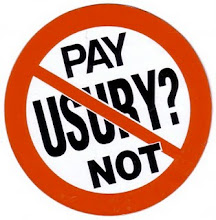Debt: The first five thousand years

by David Graeber
Throughout its 5000 year history, debt has always involved institutions – whether Mesopotamian sacred kingship, Mosaic jubilees, Sharia or Canon Law – that place controls on debt’s potentially catastrophic social consequences. It is only in the current era, writes anthropologist David Graeber, that we have begun to see the creation of the first effective planetary administrative system largely in order to protect the interests of creditors.
What follows is a fragment of a much larger project of research on debt and debt money in human history. The first and overwhelming conclusion of this project is that in studying economic history, we tend to systematically ignore the role of violence, the absolutely central role of war and slavery in creating and shaping the basic institutions of what we now call “the economy”. What’s more, origins matter. The violence may be invisible, but it remains inscribed in the very logic of our economic common sense, in the apparently self-evident nature of institutions that simply would never and could never exist outside of the monopoly of violence – but also, the systematic threat of violence – maintained by the contemporary state.
Let me start with the institution of slavery, whose role, I think, is key. In most times and places, slavery is seen as a consequence of war. Sometimes most slaves actually are war captives, sometimes they are not, but almost invariably, war is seen as the foundation and justification of the institution. If you surrender in war, what you surrender is your life; your conqueror has the right to kill you, and often will. If he chooses not to, you literally owe your life to him; a debt conceived as absolute, infinite, irredeemable. He can in principle extract anything he wants, and all debts – obligations – you may owe to others (your friends, family, former political allegiances), or that others owe you, are seen as being absolutely negated. Your debt to your owner is all that now exists.
This sort of logic has at least two very interesting consequences, though they might be said to pull in rather contrary directions. First of all, as we all know, it is another typical – perhaps defining – feature of slavery that slaves can be bought or sold. In this case, absolute debt becomes (in another context, that of the market) no longer absolute. In fact, it can be precisely quantified. There is good reason to believe that it was just this operation that made it possible to create something like our contemporary form of money to begin with, since what anthropologists used to refer to as “primitive money”, the kind that one finds in stateless societies (Solomon Island feather money, Iroquois wampum), was mostly used to arrange marriages, resolve blood feuds, and fiddle with other sorts of relations between people, rather than to buy and sell commodities. For instance, if slavery is debt, then debt can lead to slavery.
A Babylonian peasant might have paid a handy sum in silver to his wife’s parents to officialise the marriage, but he in no sense owned her. He certainly couldn’t buy or sell the mother of his children. But all that would change if he took out a loan. Were he to default, his creditors could first remove his sheep and furniture, then his house, fields and orchards, and finally take his wife, children, and even himself as debt peons until the matter was settled (which, as his resources vanished, of course became increasingly difficult to do). Debt was the hinge that made it possible to imagine money in anything like the modern sense, and therefore, also, to produce what we like to call the market: an arena where anything can be bought and sold, because all objects are (like slaves) disembedded from their former social relations and exist only in relation to money. (snip) ...
Read the complete article at this website:
http://blog.longnow.org/2010/04/22/debt-the-first-five-thousand-years


0 Comments:
Post a Comment
<< Home